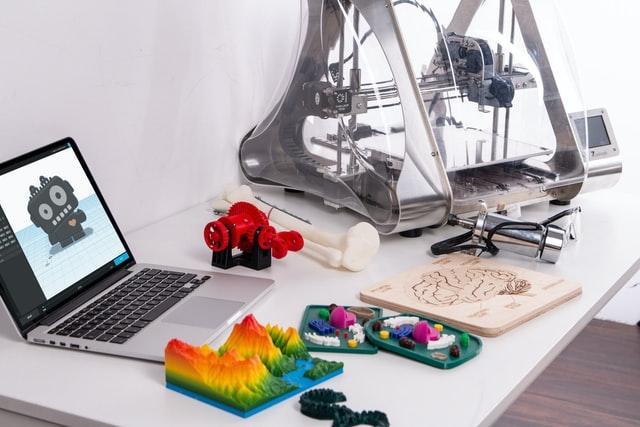How much it costs to print in 3D is not a self-governing subject. It’s a topic that is entirely dependent on several factors that are attached to it. Whether it’s a small object like a toy soldier or a bigger one like a model house. The elements remain quite the same.

Before we go on, knowing the 3D model is very important as it gives preliminary information of the type or amount of material you need and the amount of time you would likely spend making the printout. Don’t just dive into printing out in 3D. A proper layout and plan are needed. This will also help you understand the simplicity or complexity of the design you want to print out and help reduce or eliminate any problem you might likely encounter while working.
The Basic Costs
The Cost of a 3D Printer
These are the first costs that come to mind. First and foremost, you would want to know how much a 3D printer costs as it is impossible to print without one. (Any price quoted here is indicative and therefore liable to change – so you are best advised to do personal research of your own). The cost of a 3D printer depends on the type of printer you want to get, ranging from the entry-level 3D printer for miniatures is the cheapest range from $120-$600 to the Hobbyist printer, which goes for $400-$1,500 up to the Industrial 3D printers which go for incredible prices of $20,000-$100,000. Also, put the cost of maintenance or machine upkeep in the back of your mind.
The Cost of The Materials Needed.
The cost of materials needed or better referred to as operational cost, will be one of the significant factors to consider in the long-time. The two most commonly used materials for printing in 3D are Filaments and Resin. Generally, Resin costs more than filaments. (Keep in mind prices listed here are always liable to change). ABS and PLA are the least expensive and are widely preferred by non-professional printers; they cost around $25 per kilogram to $40 per kilogram. Other materials like ASA cost approximately $45 per kilogram; though prices may vary depending on the producer, they are still quite similar.
The downside to filament 3D printed items is that the finished product sometimes doesn’t always come out great. Time still needs to be spent on post-processing; making it challenging to print intricately complicated 3D items.
The most common resins are Elegoo Rapid Resin and Anycubic UV-curing Resins. These Resins could go for about $30 to $80 per liter though high-quality resins would cost more. Resin liquids are pretty capable of printing intricately complicated 3D items and would require less post-processing time when compared with using materials like filaments and other powders.
The Peripheral Costs
Now you’ve got a 3D printer and a filament or resin material. But there are still other costs that come with printing in 3D that are still reasonably necessary to consider, like the Day to Day Operational Costs.
Electricity Cost
The amount of energy consumed by your 3D printer and any other running machines should be considered; check the power consumption label on your appliances and make your deductions based on your usage time regarding your local energy prices.
Maintenance and Service Cost
It is well known that all machines in continuous usage will eventually wear out. The cost of maintenance and servicing of your 3D printers and other appliances should be accounted for. Warranty dates and instructions for use should be taken note of.
Cost of Other Materials
Because of the health risks of using resin materials, wearing protective headgear like your face masks and gloves is advisable. (Prices indicated here are liable to change).
- A Face Mask with an organic filter could cost about $5 to $30.
- Heavy-Duty Nitrile Gloves could cost around $30 to $40 for a box of 50 units.
- Also very important to environmental sanitation, containers where you can pour whatever you use in cleaning your items (primarily when you use Resins).
- An extractor fan to help exonerate foul smells is also a welcome addition.
- Glue to put together different parts of your 3D prints. Getting quality glue that won’t make your items look messy is essential.
- Sandpaper to properly furnish and clean your print.
- Spray paint to beautify and add a perfect professional look to your print.
- Alcohol and Cleaning Wipes to clean your 3D printing machine, printing beds, e.t.c. as you would need to clean regularly to make sure your appliances are in excellent working condition.
- The 3D Print Cleaning kit is also an ideal toolbox that sometimes comes with your 3D printer. It contains several cleaning tools.
Overview
Now we have gone through many factors to consider that could affect the cost of printing in 3D, from the cost of 3D printers to materials like Resins and Filaments to the cost of energy to be consumed to other peripheral costs like your protective gears. None of these factors should be considered in isolation as they, in one way or the different impact the cost of making a 3D print. All these variables could make the cost of a 3D print fall between $40 to as high as $20,000, still depending on the volume and value of your project.





